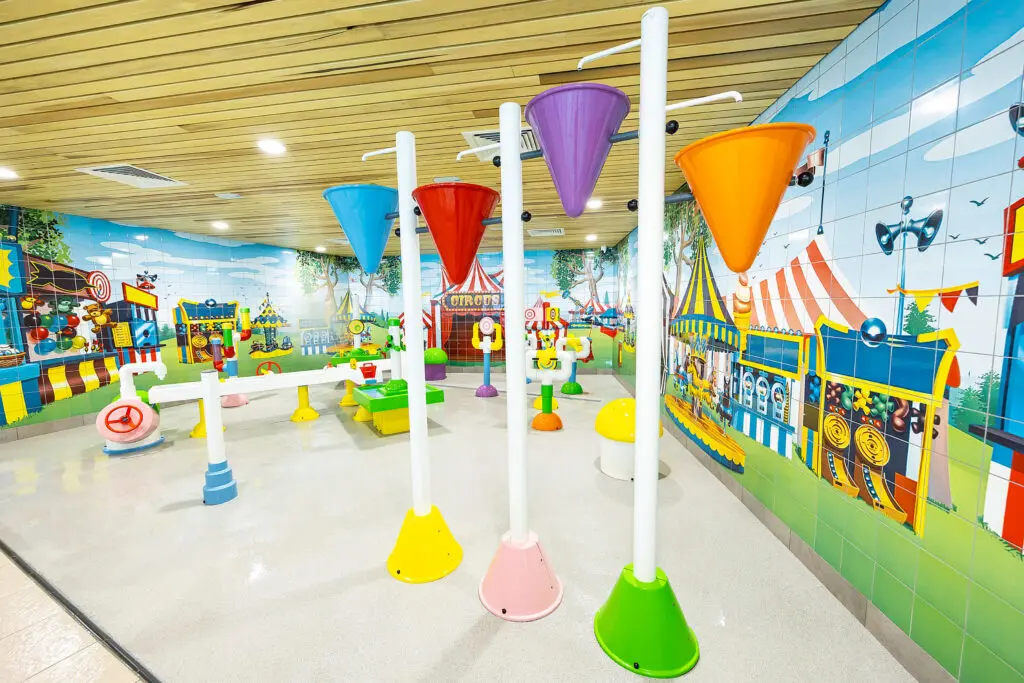
Places Leisure | Not-for-profit | 8,000 Employees
Places Leisure is a not-for-profit social enterprise. Part of the Places For People Group, it operates over 100 leisure facilities nationwide. Through these sites and a virtual online studio, Places Leisure encourages people to remain physically active and emotionally engaged in fitness, well-being, and sport.
Faced with an increasingly fast-paced rollout of new leisure facilities and a desire to move away from legacy on-premises infrastructure at existing sites, IT Director Keiron Butcher and his colleague, Andy Jones, Head of Technology Support, spoke to Node4, their technology partner of more than 20 years. “To meet the brief, Node4 recommended deploying a Software-Defined Wide Area Network (SD-WAN) based on Fortinet technology alongside Fortinet switches and access points. It was agreed that Node4 would manage the roll-out while continuing to provide vital managed services support for sites awaiting their SD-WAN connection,” Andy recalls.
Saying goodbye to on-premises infrastructure
Keiron notes this was a big change for the organisation: “Historically, we’ve been a server-based on-premises operation. But we wanted to get away from that position. Today, we’re using Node4’s managed SD-WAN to deliver templated applications, services, infrastructure, and security to bring new sites online—it’s fast and cost-effective, which is important for us as a not-for-profit.”
“Node4 handles a lot of the preparation and groundwork for new sites before they go live. Drawing on their experience as a leading Fortinet Expert MSSP Partner, they’ve made the whole process far more streamlined and lightened the load for our IT team.”
Keiron Butcher – IT Director Places Leisure
Integrated security, next-generation firewall and security analytics
“We operate these facilities on behalf of local authorities,” Andy explains. “So, there’s an extra emphasis on security and protecting personal data, and we’re able to meet that requirement with the SD-WAN. Each site is now protected by a next-generation firewall. The firewall’s settings are part of the templated design, so we can provide the same protection to each facility. It makes roll-out far easier, and it’s one less thing to worry about—plus, it’s a much more strategic way of thinking about security posture.”
Keiron notes that the SD-WAN also provides valuable security data and analytical insights, “We can look at how the protection is functioning at each site and explore data security trends and issues at an organisational level. It’s much easier than logging into 100 different firewalls to check stats and settings and make the necessary updates.”

Wi-Fi and user experience
“The new setup also gives us more insight into traffic patterns, so we have an even better understanding of customer behaviour. When people log on to the guest Wi-Fi, we can track usage patterns like repeat visitors, peak usage times, and which customer applications are particularly bandwidth hungry. We can understand how customers use our sites—tailoring services and bandwidth allocation accordingly,” Keiron comments.
He continues: “We want customers to have a great experience, and a big part of that is getting online quickly and easily. They want exercise and fitness metrics from their wearables, to post photos and videos, and to stream their music. Plus, most of our cardio equipment also need Wi-Fi connectivity.”
The general managers at sites with SD-WAN connections have told Keiron and Andy that the Wi-Fi speed and capacity have dramatically improved: “It’s easier to get onto, faster and more reliable, even at peak times. With our old system, you’d get to around 250 customers on site, and it couldn’t handle anything else,” Andy notes. “So, the guest experience at that point—at least from the Wi-Fi perspective—wasn’t as good as we’d have wanted it to be. Customers would tell staff that they had better Wi-Fi at home. But we don’t hear those kinds of complaints at sites where the SD-WAN has been rolled out.”
“It’s also improved the booking experience,” Keiron explains. “Before installing the SD-WAN, even the smallest issue within the system could prevent customers from booking. That’s bad for business—customers get frustrated, and we miss out on revenue. We now use a central cloud-based app that allows customers to book classes at their local facilities. We’ve configured availability and priorities across the SD-WAN to give customers around 99.9% availability when accessing the system.”
Roll-out of AI-enabled anti-drowning system
Since the roll-out program began, Keiron, Andy and the central IT team have taken advantage of more cloud-based services. “We’re rolling out Lynxight, an AI-enabled anti-drowning system, which relies on reliable and consistent Wi-Fi connectivity,” Keiron says. “It uses existing poolside CCTV cameras to detect potential drowning incidents in just a few seconds—notifying lifeguards, swimming teachers, and pool staff directly and in real-time on their smartwatches. It’s an example of how we researched an IT application that could make a real difference to our business, and how Node4 supported us by integrating it into our systems. Node4 also did all the necessary templating work so that it could be rolled out quickly at each location.”
“As we continue to roll out the SD-WAN, we’re unlocking more benefits and bringing significant improvements to even more customers. Working in partnership with Node4 on consultation, implementation and management, rather than trying to do everything ourselves with our in-house team, has been key to the project’s success. So, my advice to other companies looking to roll out an SD-WAN is to remain engaged with Node4, ask for help where you need it and lean on them as a trusted IT partner—you’ll be amazed at what can be accomplished.”
Read more about…


Ofsted

Stephensons
Get in touch
If you’d like to know more about any of our projects or our wider range of services or for a little chat, get in touch with us today.
Our team of certified friendly tech professionals will be happy to help with any query you may have.
You can also learn more about our range of services, including our IT security, data centre services, colocation hosting and managed IT services.
Get In Touch
Contact us using the form and we’ll get back in touch shortly. Please use the telephone number below to call us, or drop us an email if you’d prefer.